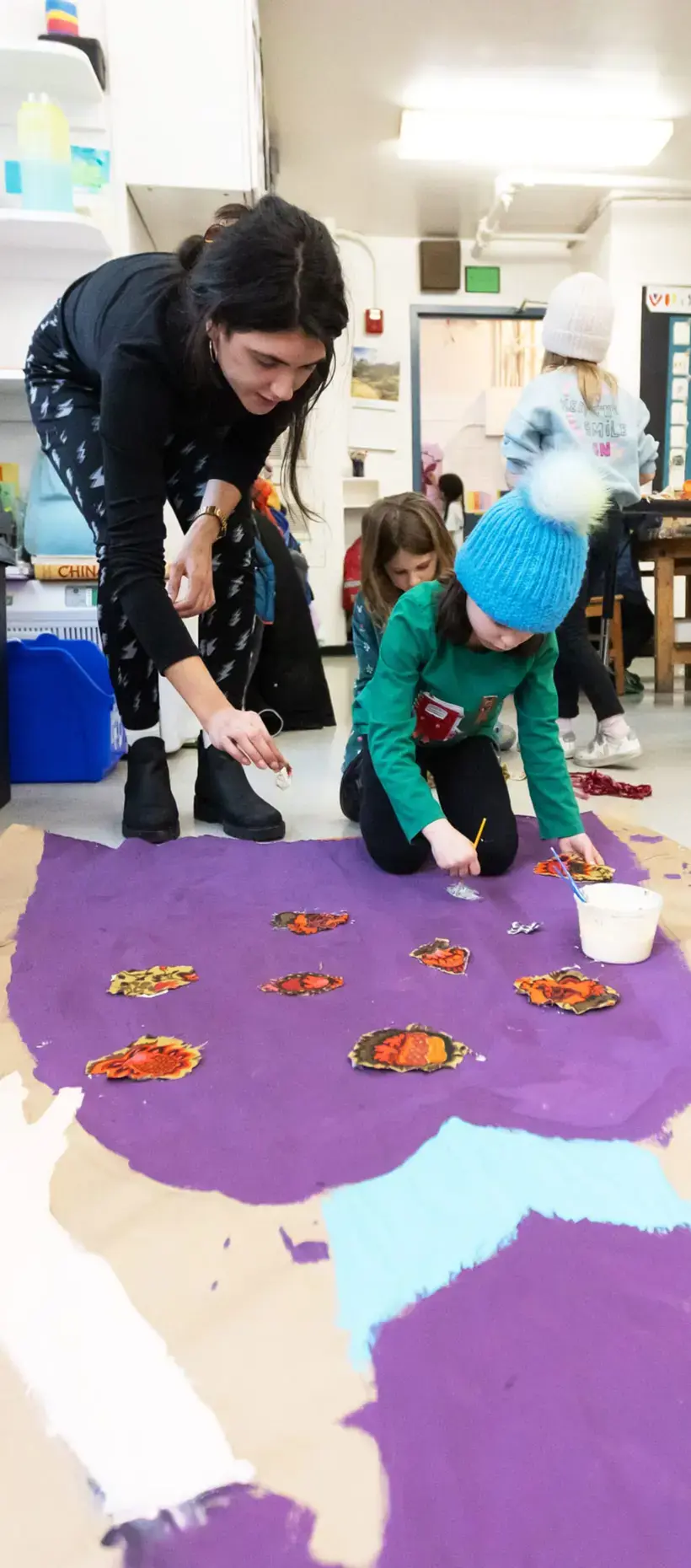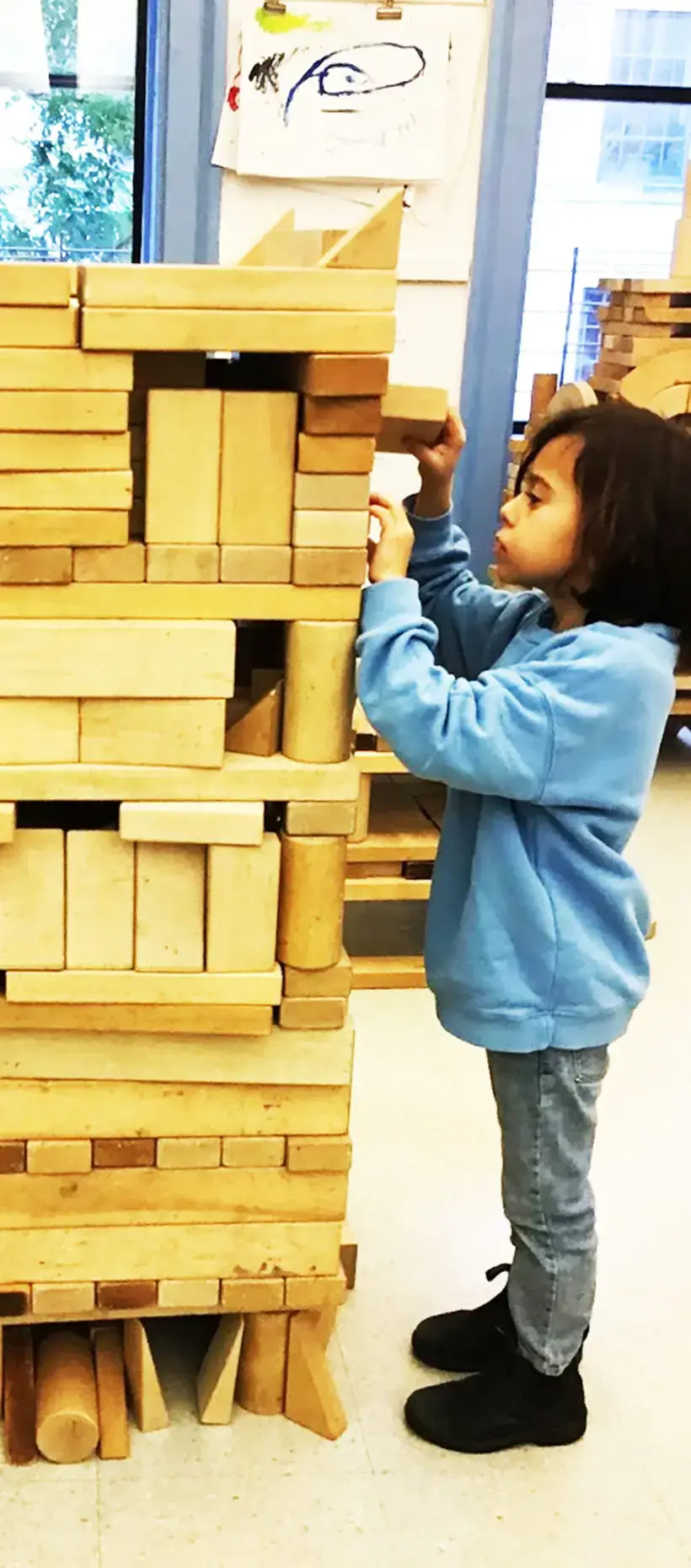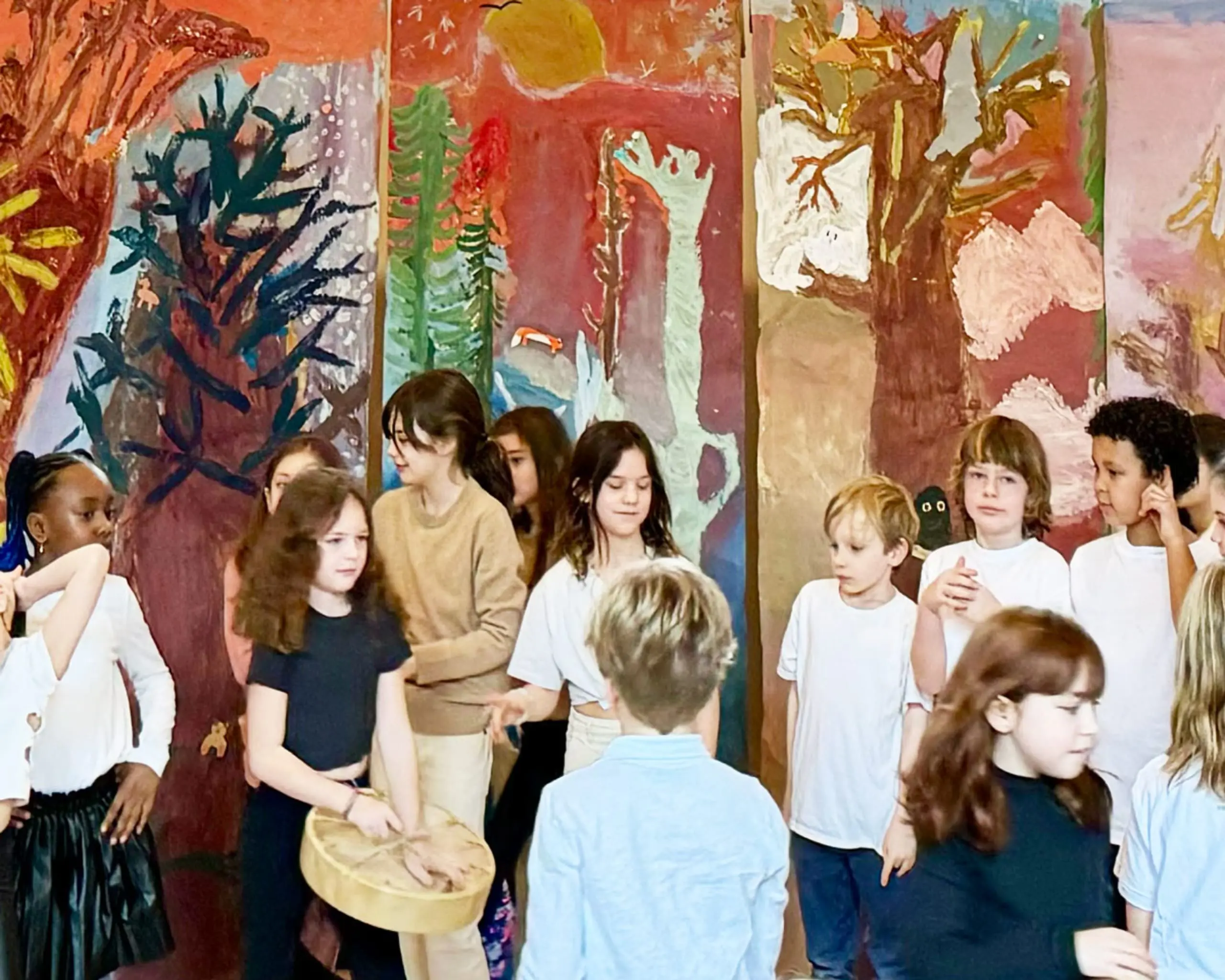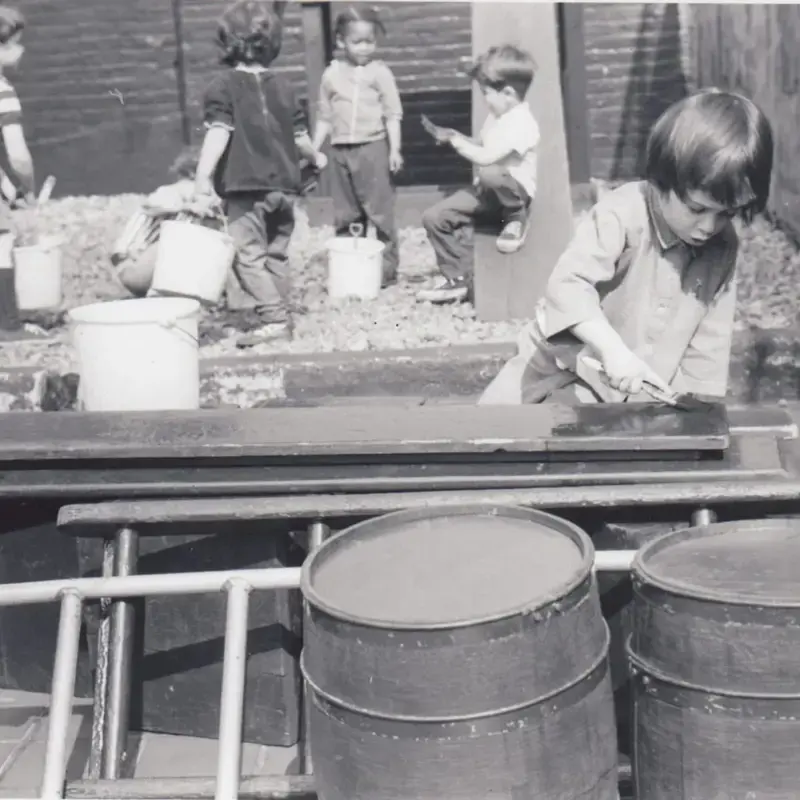Expressing Learning Through Plays: A Vibrant C&C Tradition
In 1925, Lela Stott’s VIIIs became passionate about the injustices facing Pennsylvania coal miners. The children created a play to express what they had learned. Rather than a memorization of lines, the play, written collectively by the children, demonstrated their knowledge and understanding.That tradition – synthesizing information learned throughout the school year, choosing issues, events, and scenes to represent and dramatize, solving problems collectively, and creating historically appropriate music, scenery, and props – continues 100 years later. This unparalleled process starts with the VIIIs and continues through the XIIIs, increasing in complexity and sophistication each year. The play is a culminating expression of learning; composing the play is often more engaging and elaborate than the performance itself. Founder Caroline Pratt once said, “The children make their plays for nobody’s benefit and enjoyment but their own.” This year, the VIIIs kicked off the spring plays, presenting their study of the Lenape through the lens of the seasons. Learning about indigenous people has been a long-standing tradition at C&C; minutes from a meeting dated November 15, 1948, reported it as “a common theme” for third graders (VIIIs). “Studying the indigenous populations of New York City allows students to deconstruct the modern world and to think about the past with a local, human perspective,” said VIIIs Group Teacher Jay Frankel. “Students enjoy the experience of imagining the natural world thriving on the island of Manhattan. Understanding their basic and higher needs allows them to dive into self-guided research creatively. The play is an outgrowth of their creativity and their knowledge from a variety of resources.” Children glean their knowledge from multiple sources, such as hosting cultural guests and taking field trips. Other opportunities include:
“We focused our learning around making connections to the 8 Lenape Laws,” added Lucy Christiana, VIIIsL Group Teacher. The 8 Lenape Laws:
An indelible mark of understanding is left on children. Reflected one VIII, “I think it was great because we got to honor the Lenape.”
|





















